
5 Tips for a More Sustainable Office
Creating an environment where people and the natural environment can thrive in harmony
Sustainability has been a topic growing in importance over the last decade, spearheaded by the clear impact of the climate crisis which can be felt across the globe. With building pressure on businesses to cut their carbon emissions and improve their eco-friendly credentials, many leadership teams are reworking their green policies to help them achieve net-zero carbon goals in the next few years.
When it comes to workspace design, when harnessed properly, the implementation of sustainable design principles is a great tool to help businesses become a greener workplace of the future.
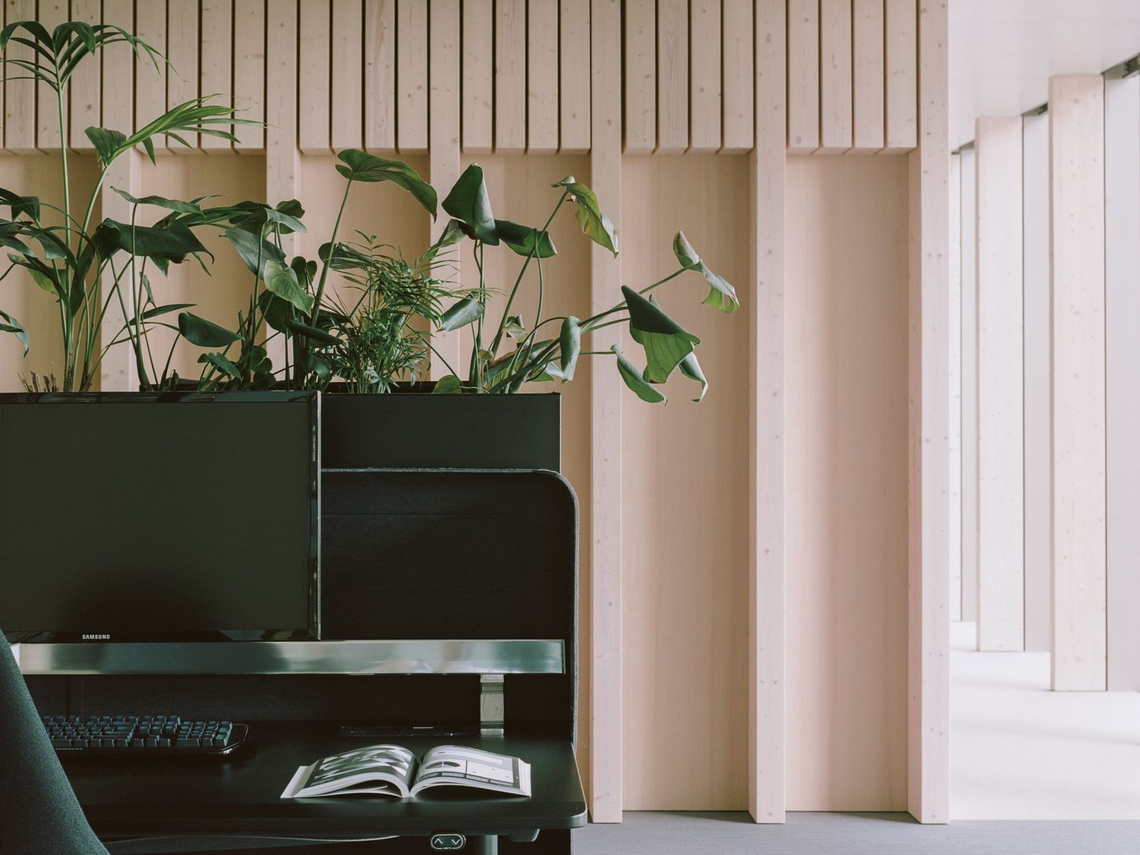
Why is sustainability so important right now?
Sustainable design in the office takes into account a variety of things from workspace layout, the use of materials in furniture to embedding a sustainable company culture. Yet, the last few years have seen some interesting and more holistic developments in the sustainability agenda.
While protecting the planet and reducing carbon emissions remains the main priority of sustainability initiatives, for corporations, becoming truly sustainable now includes finding new ways to improve employee wellbeing, becoming increasingly health conscious and improving cost-efficiency; areas that benefit greatly from good workplace design.
If becoming a more efficient, eco-friendly company isn’t enough, evidence shows that workplaces with sustainable designs reap many benefits when it comes to competitiveness. Nicola Gillen, head of total workplace at Cushman & Wakefield says that having a sustainable workplace design is paramount for productivity. “A bad office can really impact on output and happiness," therefore having a clear impact on profit and performance.
In this blog, we’ll look at 5 tips for making your office more sustainable.
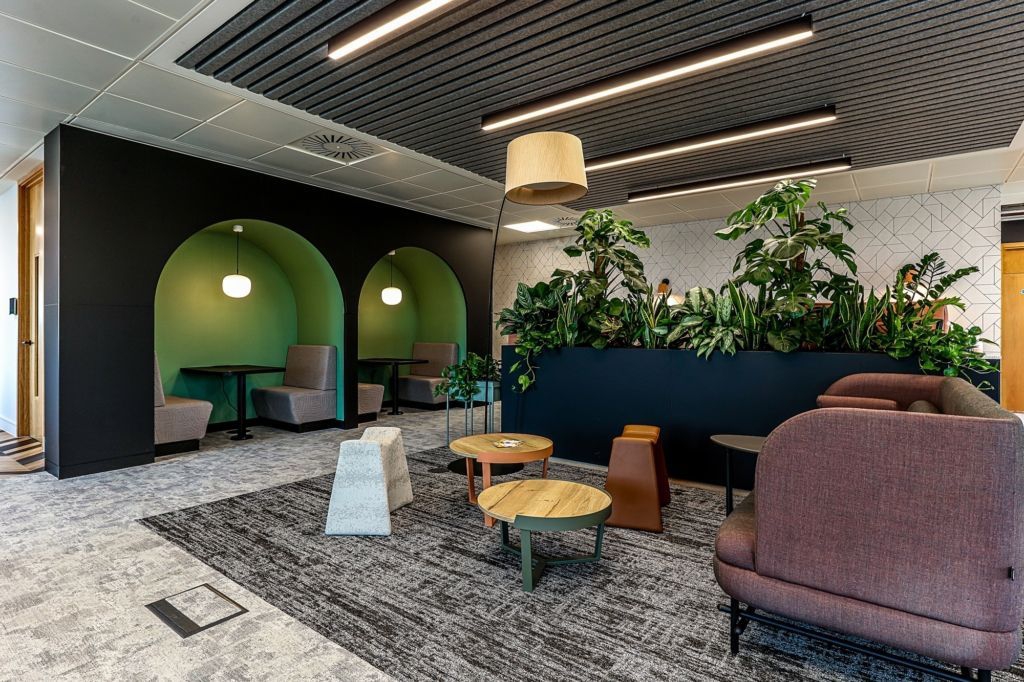
1. Organic Materials & Declare Labels
Greener, natural materials not only look attractive and encourage a kinder, more calming workspace, they are core to the sustainability agenda. The use of salvaged, recycled and organic materials in workspace design reduces the impact on the planet through minimised manufacturing processes.
The built environment is responsible for nearly 40% of global carbon emissions and one of the most effective ways to reduce embodied carbon is to manufacture furniture and fittings using bio-based materials such as wood, straw and bamboo.
Bio-based products typically require less energy to produce and have the potential to capture and store carbon through photosynthesis. As well as having a longer shelf-life, using natural materials saves money and makes office furniture reusable.
One way to ensure all furniture is as sustainable as possible is through the use of Declare Labels. Issued by the International Living Future Institute, a Declare label provides complete material transparency, taking complex chemical analysis and raw material source information and providing it to consumers in an easy-to-use and read label. You can read more about Spacestor’s commitment to sustainability and partnership with Declare here.
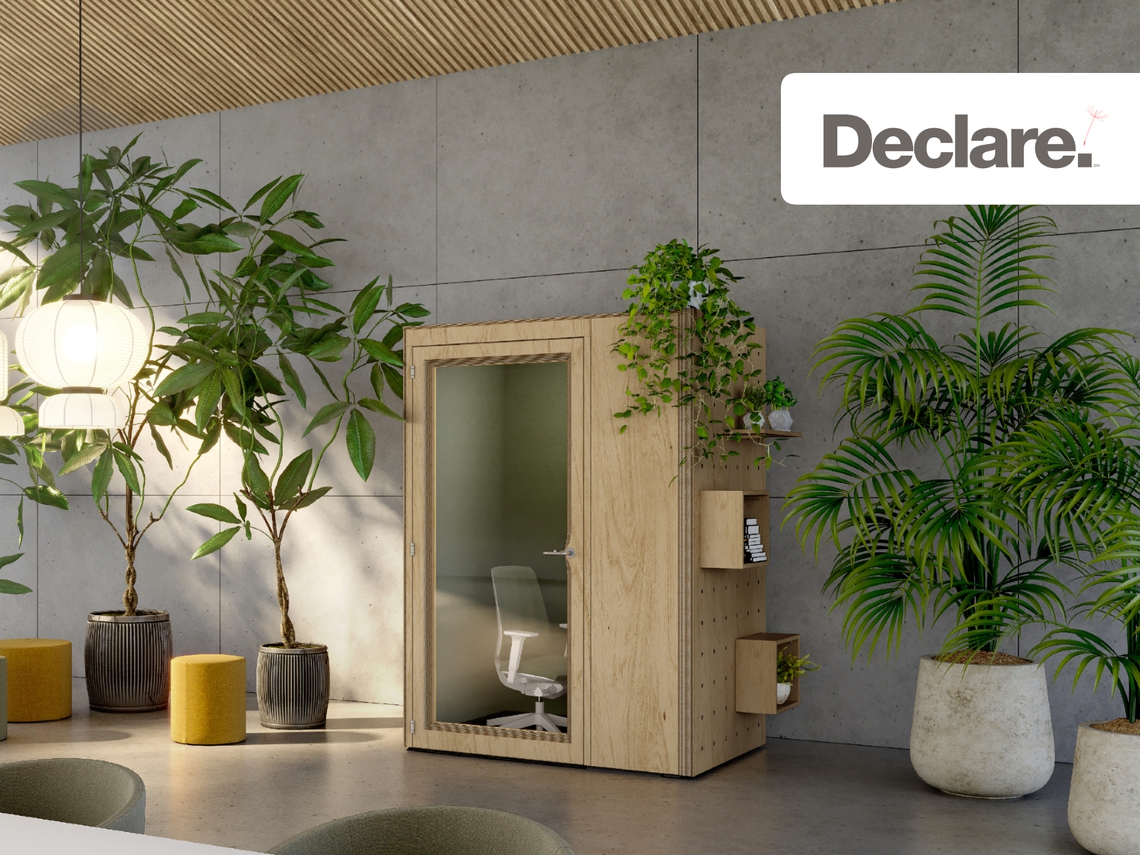
2. Modular Furniture
Modular solutions for sustainability are rising in popularity for a multitude of reasons. Investing in furniture that is reconfigurable by design means that it is future-proof, adaptable and reusable, even when moving offices or unforeseen circumstances arise.
With the rise of hybrid working, modular and scalable furniture retracts and expands alongside the workforce, allowing for complete flexibility regardless of who is in the office at any given time.
Highly-flexible solutions, such as the Palisades II range or the increasingly popular modular meeting booth are great choices for sustainable solutions as they can be reconfigured easily and are an inexpensive alternative to building permanent meeting rooms. Modular furniture helps to diminish delivery, manufacturing and demolishing fees as well as carbon outputs.
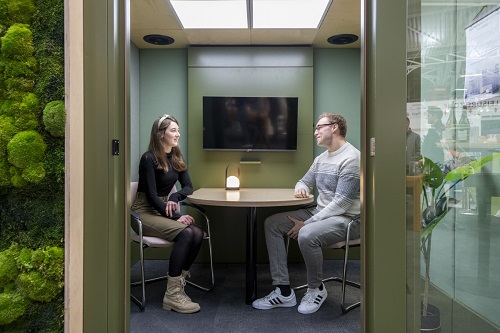
3. Biophilia
Biophilic design principles follow on nicely from the importance of using organic materials in office furniture as they have similar benefits. However, biophilia in the workplace – bringing nature into the office through plants, natural lighting, water features and even natural scenery artwork - not only improves air quality and creates a greener environment, studies have shown that it has a significant impact on employee’s mental and physical health.
Biophilic design principles help employees to reduce their stress levels, improve cognitive function and enhances creativity, mood and productivity. A combination of all of these improves employee wellbeing and health; something that is vital to encouraging a truly sustainable workplace.
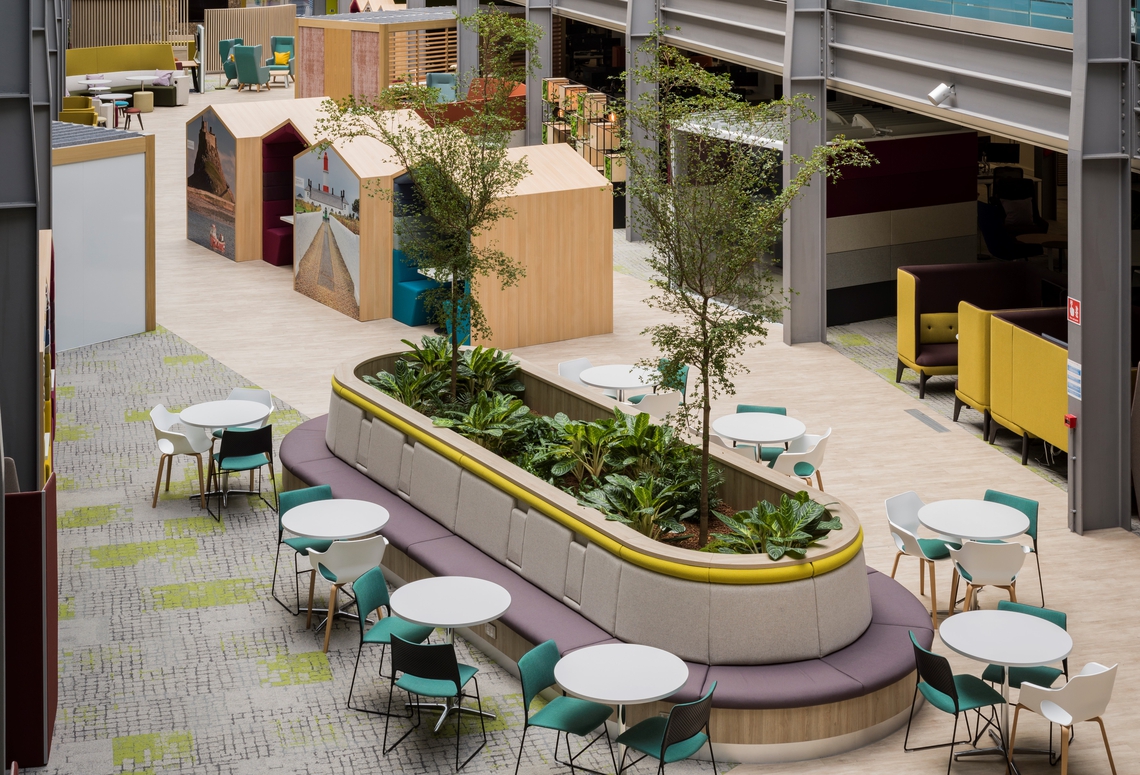
4. Focus on a Culture of Wellness
A modern workplace’s resilience requires exceptional employee wellbeing, health and sustainability. It is through connecting these principles that we see real success.
Wellness is an investment in people’s safety, health and welfare. So, through biophilic principles such as improving the air quality through plants, or tapping into employee’s natural circadian rhythms through the use of natural daylight are two elements that are better for people and for the environment, creating a culture of sustainable wellness.
This can also be achieved through empathetic design, that which protects employee wellbeing and seeks to make employees feel as comfortable as possible in the workplace, improving wellness overall.
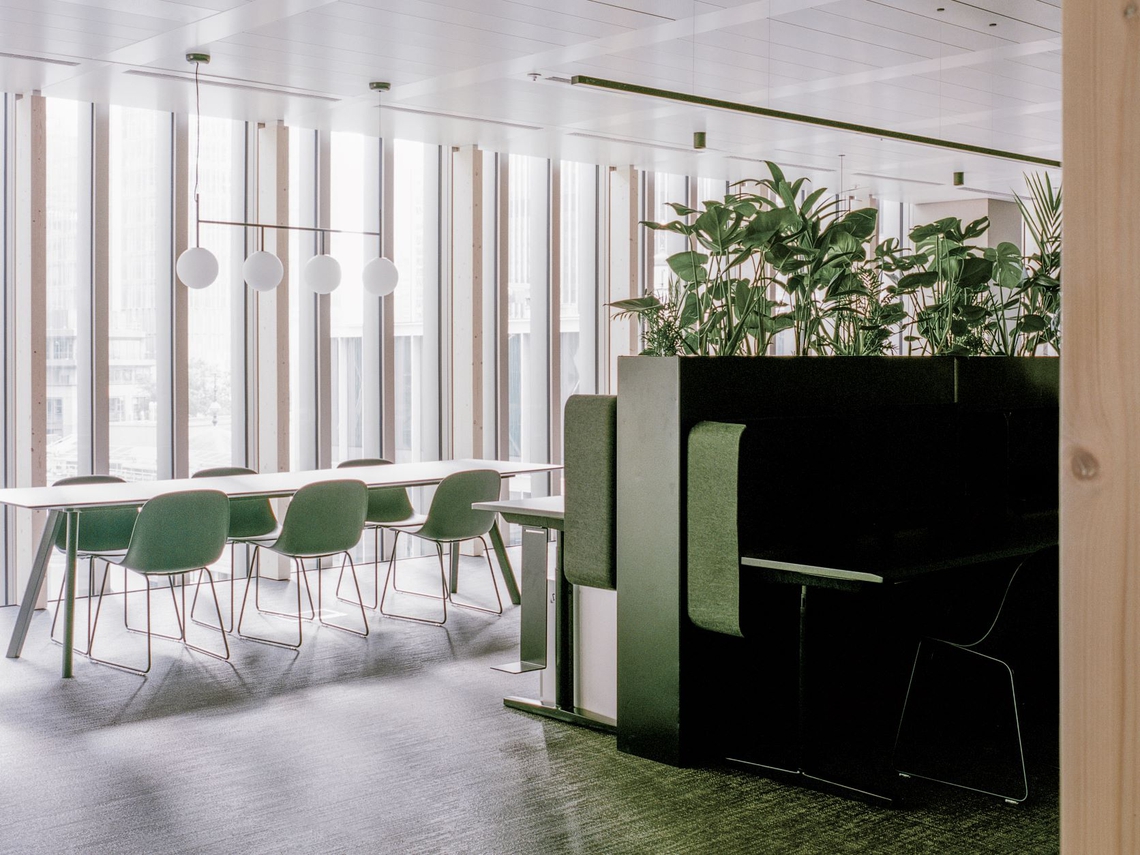
5. Embrace Ultra-flexibility
Flexibility is something that is now a given. When it comes to sustainability however, flexibility is an enabler of impactful changes that go a long way in reducing emissions.
The hybrid workplace is made for flexibility, reducing the commuting emissions released by allowing employees to work remotely when they need to. Working from home isn’t going away anytime in the near future, but neither is the physical workplace – and similarly, allowing to staff choose how they work in the office has great benefits for wellbeing and thus sustainability.
Ultra-flexibility allows for reduced real-estate costs, reduced electricity and heating costs with the employer benefits of gaining a more diverse, fulfilled, healthy workforce, improving talent retention and competitiveness.

Sustainability in the office goes beyond natural lighting and plants; it’s about creating an environment where people and the natural environment can thrive in harmony. Companies that encourage a sustainable design will benefit from a resilient and healthy workforce and world for years to come.
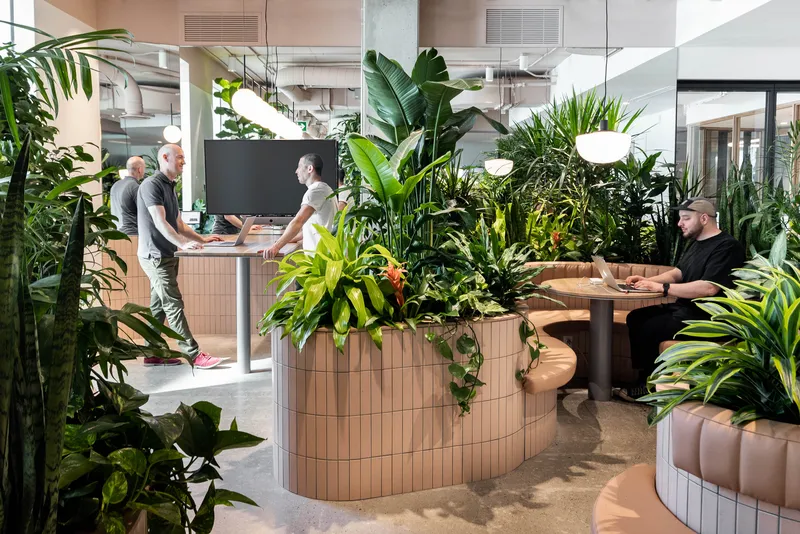
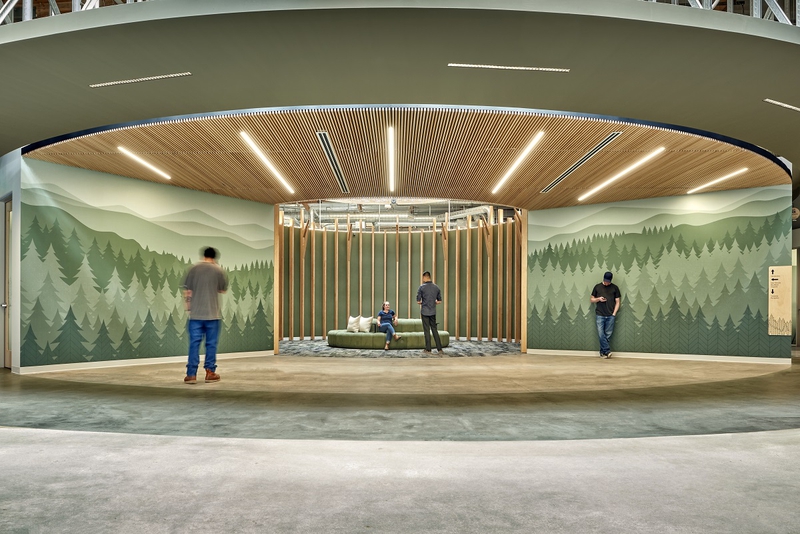

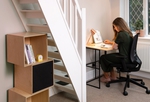

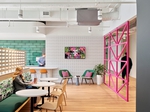
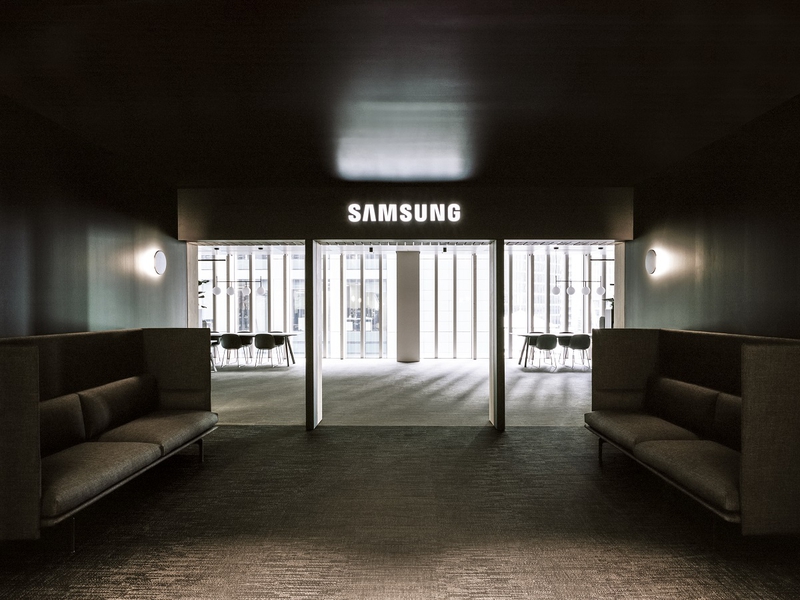
Pared back, content design that paves the way for Samsung’s hybrid, innovative and flexible workforce to build the worl…
TECHNOLOGY & IT

Smaller in size only, this workplace is a biophilic masterpiece with a focus on wellbeing, employee synergy and superio…
TECHNOLOGY & IT

A soothing ambience, delivering textural harmony and a celebration of their vision
NONPROFIT